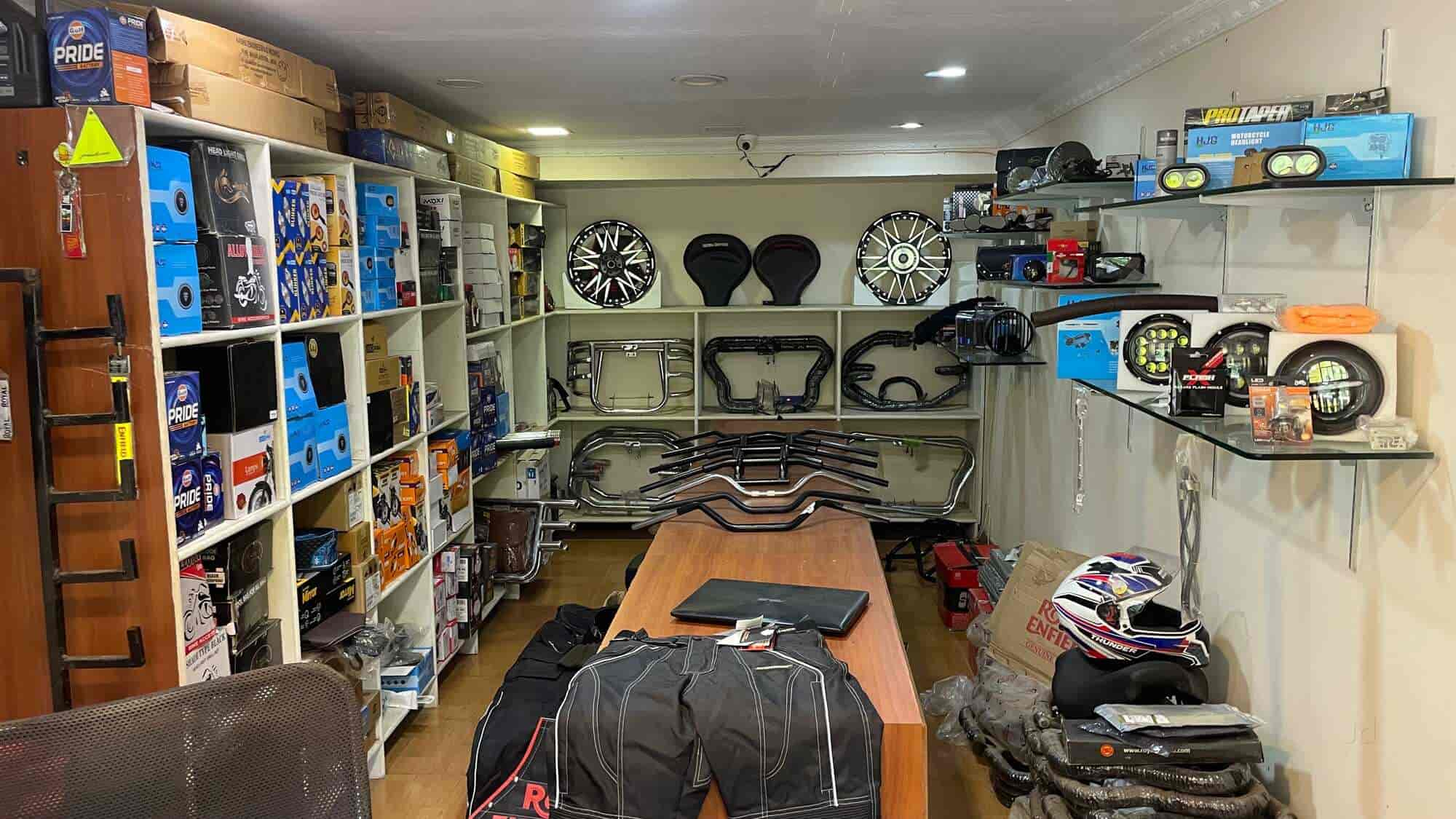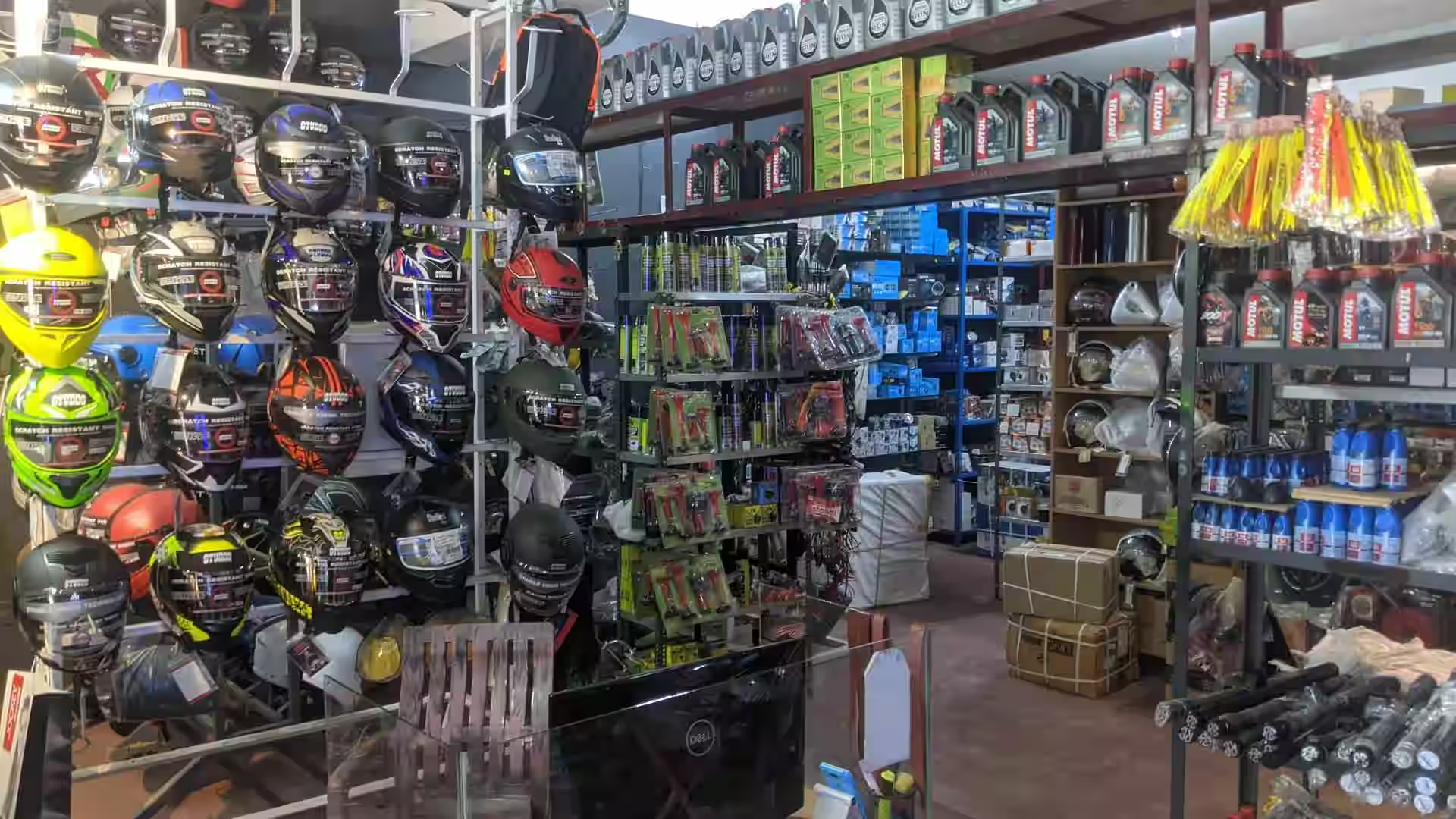Shop the Best MX Parts NZ for Your High-Performance Bike
Shop the Best MX Parts NZ for Your High-Performance Bike
Blog Article
Recognizing the Crucial Parts of a Motorcycle: A Comprehensive Overview for Fanatics
For motorcycle enthusiasts wanting to raise their riding experience and ensure their bikes run efficiently, recognizing the vital elements of a motorbike is extremely important. Each component, from the engine's detailed operations to the important role of the stopping mechanisms, not just impacts efficiency yet additionally safety and comfort. This overview will certainly walk via the fundamental components that every biker ought to recognize with, allowing informed choices in both maintenance and prospective upgrades. As we begin this expedition, one must ask: how does each component engage to produce the seamless adventure every enthusiast seeks?
Engine Components

The camshaft plays an important duty in regulating the timing of the engine's valves, ensuring the precise opening and closing required for effective gas and air intake, as well as exhaust expulsion. This timing is vital to preserving ideal engine efficiency and efficiency. In addition, the carburetor or gas injection system, depending upon the motorcycle design, is liable for blending air with gas in the proper ratio for burning.
The air conditioning system, either air or liquid-based, works to maintain the engine's temperature level within operational limits, protecting against getting too hot and making sure durability - mx gear nz. Each part, carefully created and incorporated, contributes to the seamless procedure of the engine, defining the motorbike's power result and general performance
Transmission System
Essential to the bike's capability, the transmission system makes sure reliable power transfer from the engine to the wheels. This system consists of several important elements, including the clutch, gearbox, and last drive, each playing an important duty in translating the engine's power right into movement. The clutch, typically run by a hand lever, serves to disengage the engine and engage from the transmission, permitting for smooth equipment changes and regulated acceleration.
The gearbox, frequently described as the transmission correct, contains a collection of equipments that motorcyclists can manually shift through to adjust the bike's speed and torque outcome. These gears are arranged in a sequence that enables the motorbike to accelerate smoothly and preserve optimum engine efficiency across numerous rates. A lot of bikes use a consecutive gearbox, calling for the biker to move gears in an established order.
Braking Systems
While recognizing the transmission system is crucial to using a motorcycle's power, equally essential is the capacity to manage and quit that power successfully, which is where braking devices enter into play. Brakes are essential for safety and security and efficiency, providing the biker with the essential control to navigate various surfaces and problems. Generally, motorbikes include two types of stopping systems: disc brakes and drum brakes.
Disc brakes are much more common in contemporary motorcycles due to their exceptional performance. They include a brake disc, caliper, and pads. When activated, the site here caliper presses the brake pads versus the spinning disc, transforming kinetic energy right into warm, thereby reducing the wheel. This system provides much better warm dissipation, consistent efficiency, and boosted stopping power, particularly in damp conditions.
Alternatively, drum brakes, though much less typical, are still located in some motorcycles. They work by pushing brake footwear against the inner surface area of a drum affixed to the wheel. While usually much less effective in heat dissipation and stopping my review here power, drum brakes are simpler and much more cost-efficient.
Comprehending these braking systems' subtleties allows riders to maintain their motorbikes appropriately and appreciate the engineering that guarantees safe and reliable stopping.
Suspension and Steering
Suspension and steering systems are essential parts that substantially affect a motorcycle's handling and experience comfort. The shock absorber, browse around here being composed of forks at the front and shock absorbers at the rear, takes in road abnormalities, improving security and control. Front forks, inverted or usually telescopic, compress and rebound to minimize effects, while back shock absorbers maintain tire call with the roadway, crucial for traction and security.
Steering, centered around the handlebars, links the biker to the motorcycle's directional control. The steering head bearings make sure smooth procedure, allowing accurate ability to move. Correct positioning and upkeep of these bearings are important for predictable steering feedback and minimizing cyclist fatigue.
The suspension's adjustability is one more vital aspect; preload, damping, and rebound settings permit customization to suit numerous riding designs and problems. This versatility is important for optimizing efficiency, whether browsing city streets or dealing with rugged routes. Technologies like digital shock absorber provide real-time adjustments, boosting adventure top quality across varied terrains.

Electrical Equipments
After guaranteeing a controlled and smooth trip via effective suspension and guiding systems, interest transforms to the electrical systems, a crucial element of modern motorbikes. These systems play a crucial function not only in beginning the engine yet likewise in powering different parts that improve the functionality and safety of the bike.
At the heart of a motorcycle's electrical system is the battery, which stores electrical energy required for starting the engine and powering complementary systems - motorbike shop. The alternator or generator, combined with the rectifier-regulator, guarantees the battery remains charged while the motorcycle is in operation, transforming power into electrical energy and maintaining voltage degrees
The ignition system, an additional critical element, is in charge of sparking the air-fuel mixture in the engine's cyndrical tubes. Modern motorbikes often utilize an electronic ignition system, using greater performance and integrity contrasted to traditional systems.
Lights systems, consisting of headlights, tail lights, and indicators, are likewise essential, making certain presence and security for the cyclist. Added digital components such as sensing units, control systems, and presents contribute to innovative features like gas shot management, anti-lock braking systems (ABS), and electronic dashboards, better enhancing the riding experience.
Conclusion
A complete comprehension of a motorcycle's necessary elements, consisting of the engine, transmission system, stopping mechanisms, suspension, steering, and electric systems, is crucial for fanatics aiming to maximize security, efficiency, and convenience. Proficiency of these components permits informed decisions regarding maintenance and upgrades, eventually boosting the riding experience. By incorporating this understanding, cyclists can ensure their motorcycles operate at peak effectiveness and integrity, consequently making best use of both enjoyment and durability of their automobiles.
For motorbike enthusiasts looking to elevate their riding experience and ensure their bikes run smoothly, understanding the important parts of a motorcycle is extremely important.Essential to the motorbike's capability, the transmission system ensures efficient power transfer from the engine to the wheels.While comprehending the transmission system is vital to using a motorbike's power, just as essential is the capability to manage and quit that power properly, which is where stopping systems come right into play. Typically, motorbikes feature 2 kinds of braking systems: disc brakes and drum brakes.
A thorough comprehension of a motorcycle's crucial elements, including the engine, transmission system, stopping mechanisms, suspension, guiding, and electrical systems, is indispensable for fanatics aiming to enhance safety and security, performance, and convenience.
Report this page